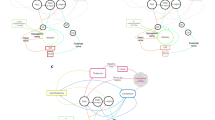Abstract
The existence of a spinal network capable of generating rhythmic alternating activity resembling locomotion still has not been firmly established in primates, including man, although evidence for one is accumulating. The present study investigated whether it is possible to activate such a network by administration of a variety of pharmacological agents to acutely spinalized marmoset monkeys (Callithrix jacchus) in the absence of phasic afferent input to the spinal cord. Fourteen marmoset monkeys were decerebrated, spinalized, and paralyzed. The nerves supplying both hindlimbs were cut and recorded from. In 5 monkeys the effect of electrical stimulation of the brainstem was investigated before spinalization. In 3 of these monkeys, rhythmic activity alternating between extensors and flexor nerves was seen. In the 2 other monkeys only synchronized activity was elicited. In acutely spinalized monkeys, administration of l-3,4-dihydroxyphenylalanine (l-dopa; 3–4 h after treatment with nialamide) failed to evoke any rhythmic alternating activity. In contrast, administration of clonidine elicited alternating activity in all of 8 monkeys tested. In 4 of these monkeys, the activity was restricted to alternation between ipsilateral and contralateral flexor nerves, whereas alternating activity between ipsilateral flexors and extensors was also seen in the other 4 monkeys. Administration of excitatory amino acids (NMDA or NMA) also elicited rhythmic alternating activity in 7 of 10 spinalized monkeys. In 4, rhythmic alternating activity was seen between extensors and flexors on one limb as well as between ipsilateral and contralateral flexors. In 3 monkeys NMDA/NMA produced alternation between extensors and flexors of one limb without alternation between the ipsilateral and contralateral sides. Administration of noradrenaline failed to elicit any rhythmic activity, but rather completely depressed already existing activity. Administration of serotonin (5-HT) was ineffective in facilitating alternating activity in 6 of 8 monkeys and was facilitatory to rhythmic activity in the other 2. We suggest that these data provide further evidence of a network capable of eliciting rhythmic alternating activity resembling locomotion in the primate spinal cord. The network, however, seems to be more difficult to activate pharmacologically in those conditions than in other mammals. This may especially be the case in higher primates, including man.
Similar content being viewed by others
Author information
Authors and Affiliations
Additional information
Received: 6 November 1997 / Accepted: 21 April 1998
Rights and permissions
About this article
Cite this article
Fedirchuk, B., Nielsen, J., Petersen, N. et al. Pharmacologically evoked fictive motor patterns in the acutely spinalized marmoset monkey (Callithrix jacchus). Exp Brain Res 122, 351–361 (1998). https://doi.org/10.1007/s002210050523
Issue Date:
DOI: https://doi.org/10.1007/s002210050523




